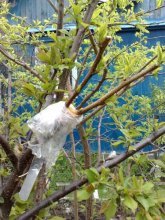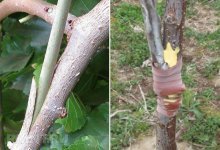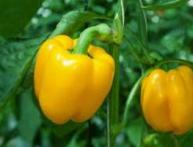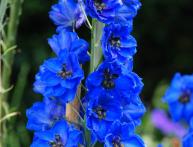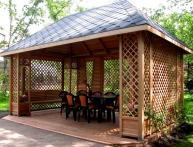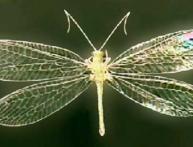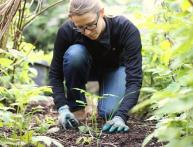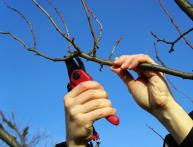Grafting fruit trees: terminology, tools and methods
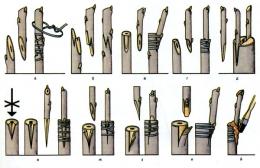
Grafting when growing plants is sometimes the only way to grow a particular variety in a climate unfavorable for gardening. This is primarily due to the fact that many species and varieties do not survive in areas with cold and long winters. There are also cultivated plants that do not reproduce by seeds and cuttings, for them vaccination is the only way to reproduce.
Sometimes grafting fruit trees is called transplantation, because part of one plant is transferred and grafted onto another. Thus, every gardener, having mastered the grafting technique, can create the tree of his dreams. Before you pick up a grafting knife, you need to become familiar with the principles of plant grafting and terminology.
Content:
- What you need to know before vaccination
- Tools and materials for plant grafting
- Methods of grafting fruit plants
What you need to know before vaccination
At least two plants are needed for grafting. One will serve as a rootstock, the second as a scion.
Rootstock
A plant onto which another plant will be grafted is called a rootstock. The prefix “under” indicates that it will be located below and grow on its roots. If possible, young plants are used as rootstocks, since their tissues grow quickly and the wound area heals quickly during grafting. A well-chosen rootstock, as a rule, should improve the quality scion. The rootstock can be obtained as follows:
- buy at the nursery
- grow from seeds
- choose from wild seedlings
- root cuttings
- take stalk without roots
The rootstock may influence the grafted part. He can change:
- winter hardiness
- life expectancy
- fruit and plant size
- fruiting dates
- fruit taste
- disease resistance
Scion
As a scion, you can take either a cutting or a separate bud, and sometimes a branch. The part of the plant that develops from the graft is also called the scion. The scion is usually taken from a fruit nursery or harvested from a mother plant in your own garden. For spring grafting, it is better to prepare cuttings either in the fall or in early spring. For summer vaccination, the grafting material is cut off on the day of vaccination. Cuttings for grafting must meet the following requirements:
- their diameter is desirable no more than 0.5 -0.7 cm
- cut them from the central part of ripened shoots
- preferred length - up to 30 cm
- the presence of living buds that have not yet sprouted
When planning a graft, it is important to know that not all plants “get along” with each other; sometimes the problem can be solved with the help of an insert plant that gets along well with both the scion and the rootstock, or by selecting plants that match each other.
Correspondence of the scion to the rootstock
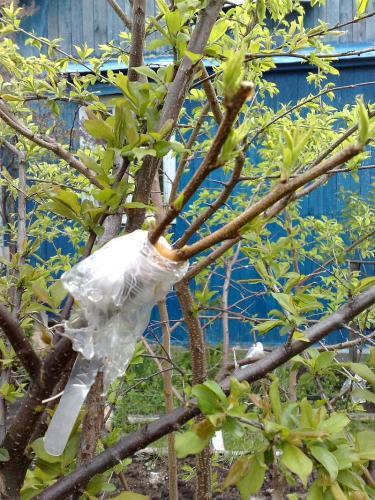
Only related plants can be grafted. With excellent compatibility, the scion and rootstock not only grow together well, but both parts develop well. Gardeners have noticed a phenomenon called late incompatibility. This happens when at first glance the plants have grown together well, but after five to six, sometimes even after 10 years, the plant breaks at the grafting site.
It is worth noting that there are situations when the rootstock and scion are swapped and the plants show incompatibility, although in the reverse situation everything was fine.
The interaction of main scions and rootstocks in fruit plants has been studied quite well, but a novice gardener needs to pay special attention to this point before choosing a grafting method and, if possible, grafting pear to pear, apple to apple, and plum to plum, although there are other combinations. Before choosing a grafting method, you need to take care of the tools and materials.
Tools and materials for plant grafting
The required vaccination kit includes:
- knives
- garden pruner
- harness
- garden var
- container with water
- bandage and iodine in case of a cut
Knives
To carry out vaccination, one special grafting knife will not be enough; two or three will be needed. When choosing a grafting knife, you should pay attention to both the handle and the blade. For a blade, the main condition is its sharpness. Sharpen the grafting knife on one side. Therefore, a necessary addition to such a knife is a sharpening stone. The handle is no less important; it is grippy and comfortable; it will make the process more comfortable. In order not to interrupt work for sharpening too often, you need to stock up on two knives. You will also need a garden knife to remove small branches. Important! When working with a cutting tool, observe safety precautions and carry it either in a case or in a special bag.
Harness
The easiest option for garters grafting is an insulating tape, it is wound around the grafting with the sticky layer facing out. Transparent polyethylene tape is also suitable.The best option is one that stretches well; it will not retard the growth of the plant at the grafting site.
Garden var
This material will be needed for coating the grafting site and for cutting small branches up to 3 cm thick. Such branches can be cut with garden pruners. Having prepared the tools and materials, you can begin vaccinations.
Methods of grafting fruit plants
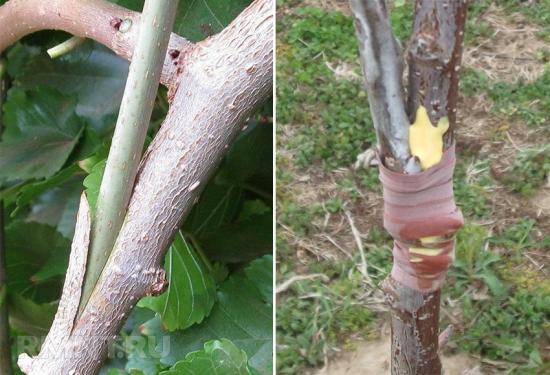
Currently, many different methods of grafting fruit plants are known. There are vaccination machines of various modifications, from portable amateur ones to reputable professional ones. In amateur gardening, the following methods are most often used:
- eye grafting or budding
- grafting by cuttings
Budding
For this method, the scion is a cut bud with a part of the bark - a shield; when preparing buds for grafting, they can be cut from both bark and wood. If you lack experience, it’s easier to use the butt method. This vaccination is suitable for any time, regardless of sap flow. The second method is grafting into a T-shaped cut, when the scion shield is tucked behind the bark of the rootstock, cut in the shape of the letter T. Some features of budding:
- it is made from the north side
- cuts for it should be as even as possible
- The first cuts are made on the rootstock
- secondly, I cut off the shield with the bud from the scion
- the scion is inserted into a cut on the rootstock or applied to it
- tie the vaccination site
Important! Keep the grafting site on the rootstock and scion shield clean.
Grafting with cuttings
This grafting is carried out not by one bud, but by several, which are located on the cutting. From such a scion, the crown of the plant is formed somewhat faster.The simplest method of grafting with cuttings is copulation, when the grafting sites on the rootstock and scion are the same in size. The optimal cut length for grafting is 2-3 cm, it is done by simply cutting it diagonally, the parts are applied to each other and “bandaged” with a winding. You can use a more reliable method of grafting fruit plants - improved copulation.
With improved copulation, an additional cut is made on both the rootstock and the scion, resulting in “tongues” that fit tightly behind each other. The above methods of grafting with cuttings are not suitable if the scion is much thinner than the rootstock. Here, grafting methods are suitable for fruit plants cuttings:
- in the butt
- for the bark
- into the side cut
- into the cleft
- wedge
It is difficult for a novice gardener to achieve success right away; it is advisable to master the technique of grafting on branches and cuttings cut from linden, willow, and rowan. After several trial graftings, you can begin grafting on garden plants.
Video about proper tree grafting:
Interesting information about the vegetable garden

